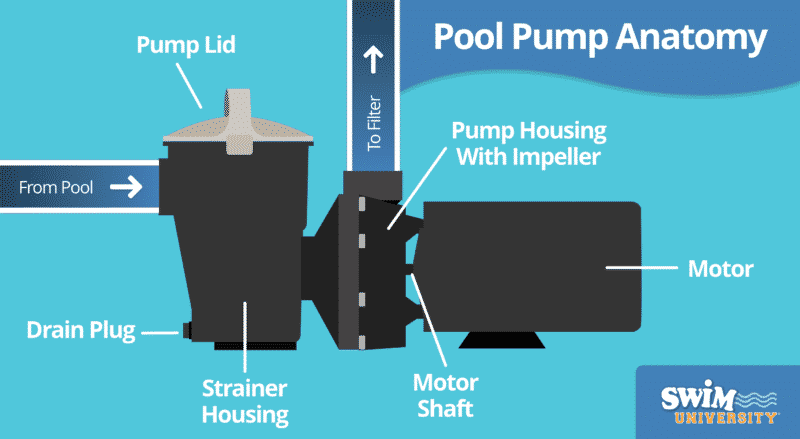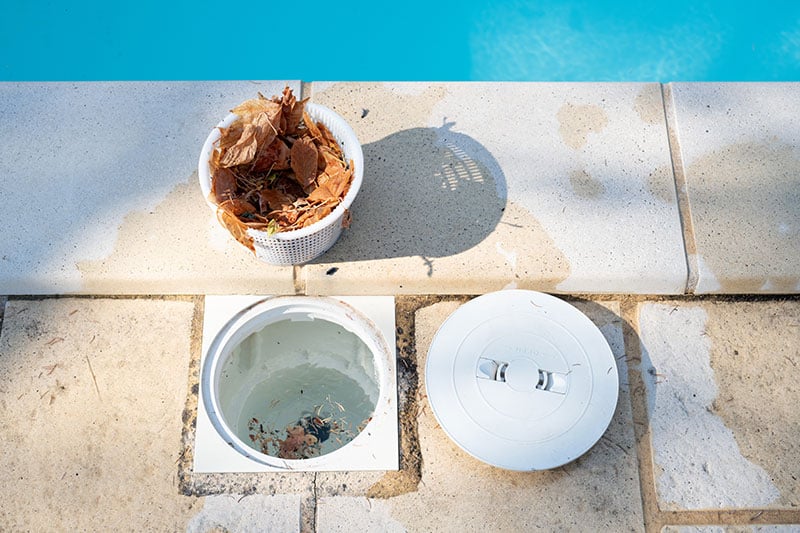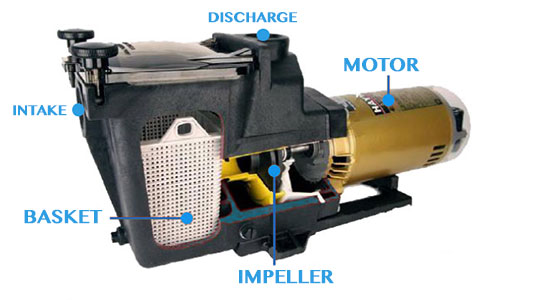The most important part of owning a pool is checking and emptying both the skimmer basket by the pool and the pump basket inside the pump daily because this maintenance will free up the water flow, allowing the system to fully function at full capacity. Why is my pool pump not pulling water from the skimmer?
Reasons for no flow being pulled from Skimmer:
- Clogged skimmer or pump baskets
- Malfunctioning skimmer weir
- Air leaks in the suction line
- Loose or damaged pump lid seal
- Blockages or damage to the pump impeller
- Motor overheating or malfunction
- Improperly primed pump
- The insufficient water level in the pool
The pool pump is responsible for creating the necessary suction to draw water from the skimmer and other intake points. It consists of an electric motor and an impeller housed within a pump housing. As the impeller spins, it generates centrifugal force, which pulls water into the pump and pushes it through the filtration system. This is the lifeblood of a swimming pool’s system.
Introduction:
A properly functioning pool pump is the heart of any swimming pool system, ensuring water circulation, filtration, and sanitation. Without it, the pool can quickly become stagnant, dirty, and even unsafe for swimming. However, like any mechanical system, pool pumps can encounter issues that hinder their performance. One common problem is when the pump fails to pull water from the skimmer, disrupting the circulation process and potentially causing water quality problems.
In this article, we’ll delve into the importance of a well-maintained pool pump and explore the common issues that can arise when the pump is not effectively pulling water from the skimmer. Whether you’re a pool owner or a professional in the industry, understanding these issues and how to troubleshoot them is essential for keeping your pool in top condition.
The purpose of this article is to provide a comprehensive, step-by-step troubleshooting guide for addressing pool pump issues related to inadequate water suction from the skimmer. By following the outlined steps, readers will be equipped with the knowledge and techniques needed to identify and resolve pump problems efficiently, ensuring optimal pool performance and enjoyment.
Pool Pump Not Pulling Water From Skimmer
When a pool pump fails to pull water from the skimmer, several issues may be at play. First, check the skimmer and pump baskets for any debris that could obstruct water flow. Additionally, inspect the skimmer weir to ensure it moves freely and allows water to enter the skimmer.
Make sure the pump lid is securely closed and sealed to maintain proper suction. Check for air leaks in the suction line, as these can hinder the pump’s ability to draw water. If needed, prime the pump to restore proper suction. Inspect the pump impeller for any blockages or damage that may be impeding water flow.
Lastly, monitor the pump motor for signs of overheating or malfunction, which may require professional attention. Regular maintenance and prompt repair are crucial for ensuring the pump continues to function effectively. By addressing these issues promptly, pool owners can maintain a clean and properly functioning pool for enjoyment and relaxation.




:max_bytes(150000):strip_icc()/SPR-how-to-prime-a-pool-pump-7373092-hero-4dcf05e7385b49c7a2e7c586a67d85ba.jpg)

